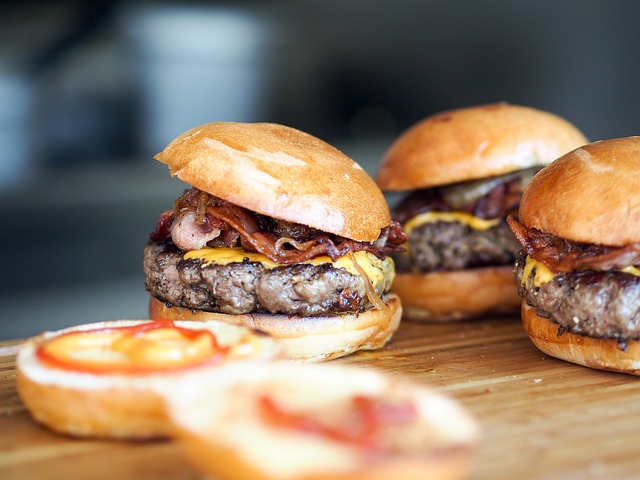The science behind the perfect burger

It takes physics, chemistry and biology to grill a perfect burger
Whether your barbecue is plumbed into a gas tank, or is a more traditional coal or wood-fired burner, there are two key ingredients for a good grilling: heat and smoke.
Barbecuing is very different from cooking on a hob or in an oven. On the hob, the heat moves from ring to pan to meat mainly by conduction. The metal pan is in physical contact with the heat source, and the meat is in direct contact with the pan. Alternatively, when meat is cooked in an oven, heat mainly travels by convection. The element heats the air, which circulates around the oven, and around your food.
On a barbecue, however, the burgers and sausages are far above the coals, and with the lid off, convection isn’t nearly as important as it is in the oven. Instead, most of the heat comes from infrared radiation. Radiant heat is absorbed by dark surfaces, so lining your barbecue with shiny foil can help to direct all of the warmth to where you need it. When using coals, waiting for them to turn white with ash ensures that they are evenly heated through. As the meat dries out on the outer edges, it starts to brown; sugar reacts with protein to create that distinctive barbecued crust. You can do this indoors on the hob too, but to get that authentic barbecue taste, you need smoke. When fats and juices drip down on to the barbecue, they burn, releasing flavour and odour molecules that rise up, filling the air with the scent of summer, and sticking to the surface of the meat.
How IT Works BBQ tips
- Wait for the coals to go white
Not only does this mean that they are hot enough, the coating of ash will help to control the amount of heat they radiate. - Preheat the grill
If you’re after those charred grill lines, you need to make sure that your grill is scorching before you put your burgers on. - Don’t bother searing
This technique is often thought to seal in the meat’s juices, but may actually do the opposite. - Turn frequently
No one likes a burnt sausage. Keep them moving to prevent one side heating up too much. - Let it rest
This allows the muscle fibres to relax a little, holding on to more water when the meat is cut.
For more science and technology articles, pick up the latest copy of How It Works from all good retailers or from our website now. If you have a tablet or smartphone, you can also download the digital version onto your iOS or Android device. To make sure you never miss an issue of How It Works magazine, subscribe today!






